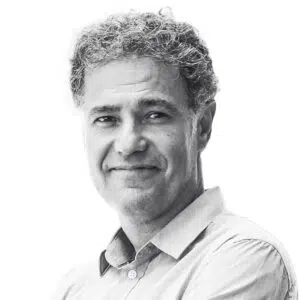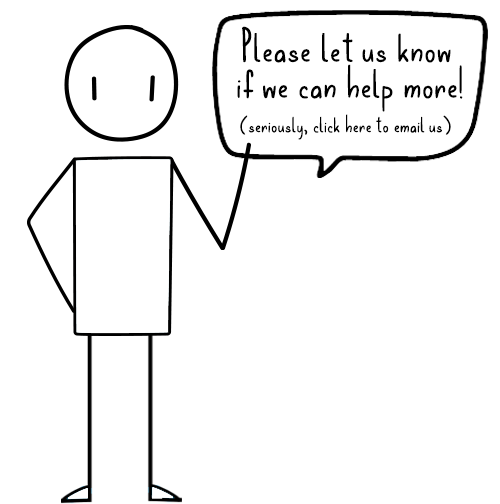Fundamentals: How to conduct effective workshops-EN
- Business Agility, Business Analyisis
- Quick Tip

Alfred Maeso Aztarain
Fundamentals: How to conduct effective workshops-EN
The BABOK Guide defines Workshop as “a facilitated and focused event attended by key stakeholders for the purpose of achieving a defined goal.”
According to DSDM it is “a special type of meeting with clear objectives, a group of participants chosen and empowered to deliver the required result.”
In general, we can say that it is a technique for quickly obtaining information in a manner agreed upon between different points of view. Workshops usually have a short duration. They can be conducted in an hour or two, or extend into a couple of days. The important thing is to acquire new knowledge or skills during its course, as well as to obtain other points of view from the participants through teamwork and open communication. To help promote collaboration, it is necessary to have someone designated as facilitator. The facilitator is responsible for supervising workshop activities, providing structure, helping the attendees, and moving the session forward.
A workshop can be used for many different situations, from defining and agreeing on strategic plans, identifying and prioritizing requirements, or solving complex technical problems. In short, workshops are excellent for any situation that requires high levels of collaboration, commitment, and agreement between different participants. Workshop also serve to promote trust and effective communication among stakeholders.
While there are many benefits of holding a workshop, a poorly executed workshop can generate conflicts, contribute to existing problems, and reduce confidence that the intended goals can be achieved.
How do we, therefore, make the workshop successful? What are key aspects to consider in making it efficient? In this article we present some essential criteria to ensure the success of the workshop.
Facilitator Role
This is the key role. The facilitator is charged with ensuring that the objectives of the session are met by directing and guiding the participants through the exercises and activities during the workshop.
The facilitator should not take sides and should be perceived by the attendees as neutral. One of their roles is to ensure that the opinions of all attendees carry equal weight and that everyone can collaborate in the same way. The purpose of a workshop is not to convince, but for different points of view to work together to reach agreements.
Another important role of the facilitator is to keep the participants engaged. We asked our instructors to share what they do to engage participants when faced with common workshop scenarios. Download them in our quick tip by filling out the form in the sidebar.
If you do not have someone internally who can play the role of facilitator, a good option is to invite in an external facilitator who is impartial to the results and possesses the necessary skills to lead it.
Plan the for Session
Planning a workshop is a complex activity that requires time and experience. At a minimum, be sure to consider these elements:
- Objectives and results. What do you want to achieve in the workshop? What should be the tangible results to produce during the workshop?
- Participants. Who should attend so that we can achieve the objectives and expected results? Ideally, groups of between 5 and 15 people (for a single facilitator) will represent all existing points of view regarding the problem or situation to be solved.
- Duration, agenda, logistical aspects. Make sure to clearly define the expected duration (depending on the results to be achieved) and the schedule of activities that participants should be familiar with. Pay special attention to the characteristics of the workshop location (normally a large room with space to move around, worktables, places to hang flipcharts/post-its) and the materials needed (flipchart, whiteboard, post-its, paper, etc.). This element will need to be reconsidered for a virtual environment. Check out the suite of tools we utilize in our Open Class virtual trainings.
- Structure and exercises to be carried out. How long will attendees need to reach conclusions? What exercises or activities should be done to achieve the expected results? What issues should be resolved during the session and what should not?
- Validation and Monitoring. How will the conclusions be documented? How will the results be validated? What follow-up will be given to the attendees?
Structure for the Workshop
Workshops should be considered an intensive exercise of increasing difficulty that requires all attendees to participate and collaborate.
Reaching the session goals will require time, effort, and intermediate steps that focus the participants on the final result. The structure of the workshop will depend on the specific objectives to be achieved, although a standard structure should contain the following elements:
Start-Up Activities
The objective here is to present the objectives, introduce the attendees, get to know the spaces (flip charts, work tables, etc.), and to cover the rules of the workshop (use of mobile phones, punctuality, etc.). It is important to establish positive relationships between participants by creating an open, safe environment where everyone is equal and everyone’s opinions have the same weight.
Icebreakers are a great idea to promote engagement from the start of the session and help everyone get comfortable with each other and the workshop environment. Our instructors share some of their favorite ice breakers in this article and an infographic on tips for using ice breakers.
The “Work” of Workshops
This is where the expected results occur. They include different exercises where the goal is to get the participants into a “flow” as soon as possible by proposing achievable challenges, but with increasing difficulty to reach the objectives of the workshop. For example, a workshop aimed at developing an Action Plan would have a sequence of activities similar to the following:
- Assessment/diagnosis of current situation
- Identification of improvement points
- Identification and prioritization of concrete improvement actions
- Timing and assignment of responsibilities
- Risk analysis
- Preparation and validation of the action plan
Provide Conclusions
The final portion of a workshop should always serve the purpose of summarizing all the work done in the session, presenting the conclusions obtained, and determining what the next steps will be.
Don’t Forget About Feedback
Before the attendees leave the session, make sure to collect their feedback. Find out what they think went well and not so well, and how it can be improved for future workshops.
Final Tips… Exercises for Workshops
Finally, some useful ideas to make the workshop as efficient as possible:
- Use visual management (flip charts, posters, diagrams) and all available spaces (walls, worktables). The flip charts and posters help participants focus on the work and allow them to visualize the progress that is being made. The use of the different spaces allows the facilitator to change the pace up and helps to maintain interest in the session. If you are doing a virtual workshop, be sure to introduce everyone to the tools the participants will be using.
- Use post-its (or virtual post-its). Post-its allow you to summarize ideas and make them visible. They also help create synergy among all the participant’s opinions. This “documentation” can be used to quickly prepare reports from the session by taking photos.
- Do time-boxed activities. We must stress the need to respect the proposed exercises and the time reserved for them. Usually, we aren’t offered the luxury of more time, and we need to make the most of what we have.
- Respect the work of each participant. If you ask them to come up with ideas, we must connect their work to the expected results of the workshop. No one should feel like they are wasting their time on a useless activity. If using post-its, do not move or remove them without the agreement of the attendees. Each written post-it should be treated as the result of an individual effort that has to be valued.
- If we ask for individual ideas, there should be a time when these ideas come together to form group agreements, usually at the closing of each activity.
- Compile and distribute the results within a few days. It is also important that the participants are the first to receive and validate them. It may be necessary for others to see the results, but not before the people who attended have done so.
Finally, a message to facilitators: train yourselves in popular techniques and methods (Brainstorming, 6 Thinking Hats, Ante-Mortem, Gamification, Lego Serious Play, etc.), and don’t be afraid to use them. Attendees will appreciate getting out of their usual environment and routine.
Thank you,
— Alfred
Don’t forget to download our quick tip on Engaging Your Workshop Participants!
Learn more about how to conduct workshops in our Facilitating a Requirements Workshop or Remote Facilitation course, depending on your workshop environment.
Sobre el autor



